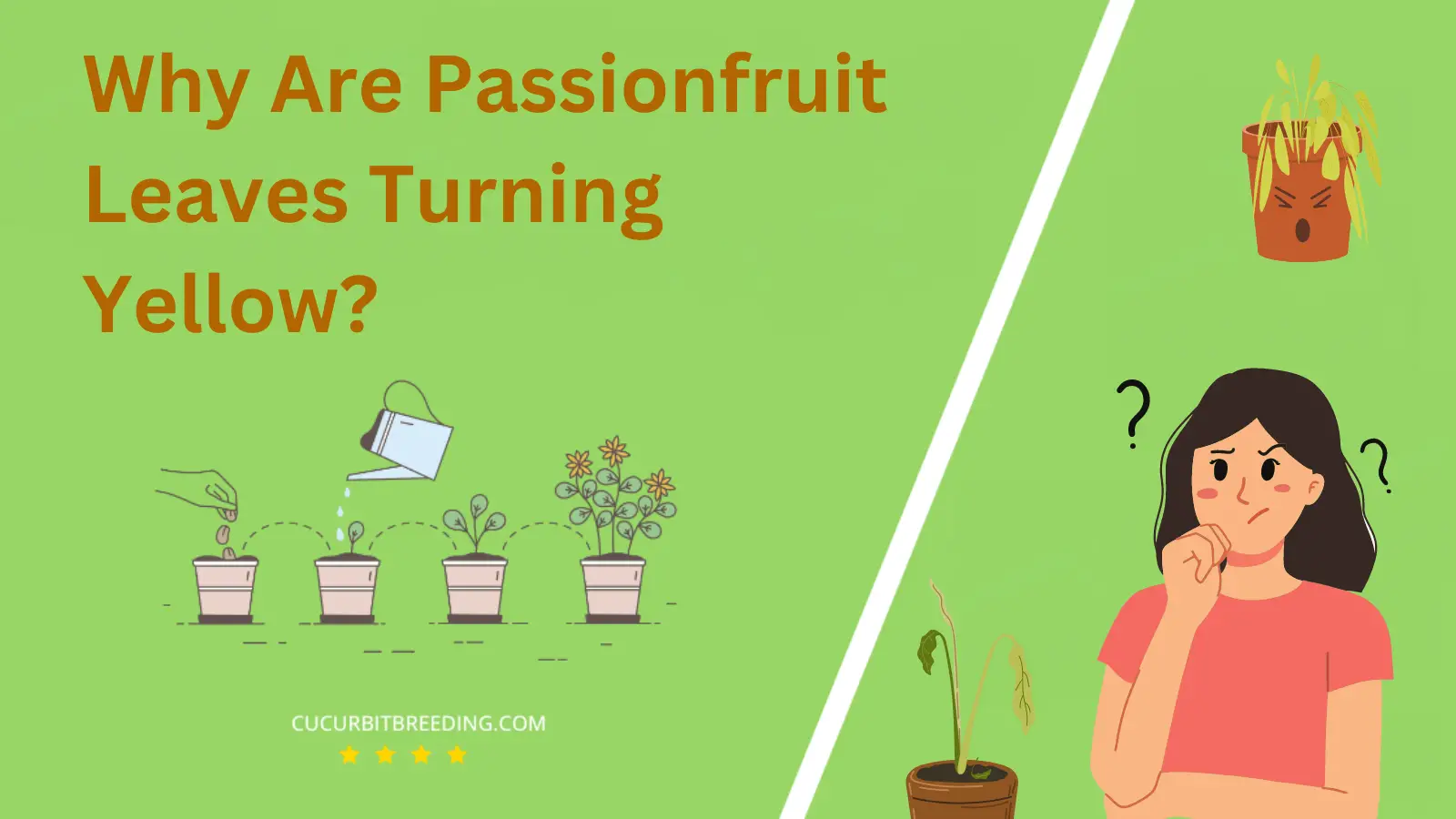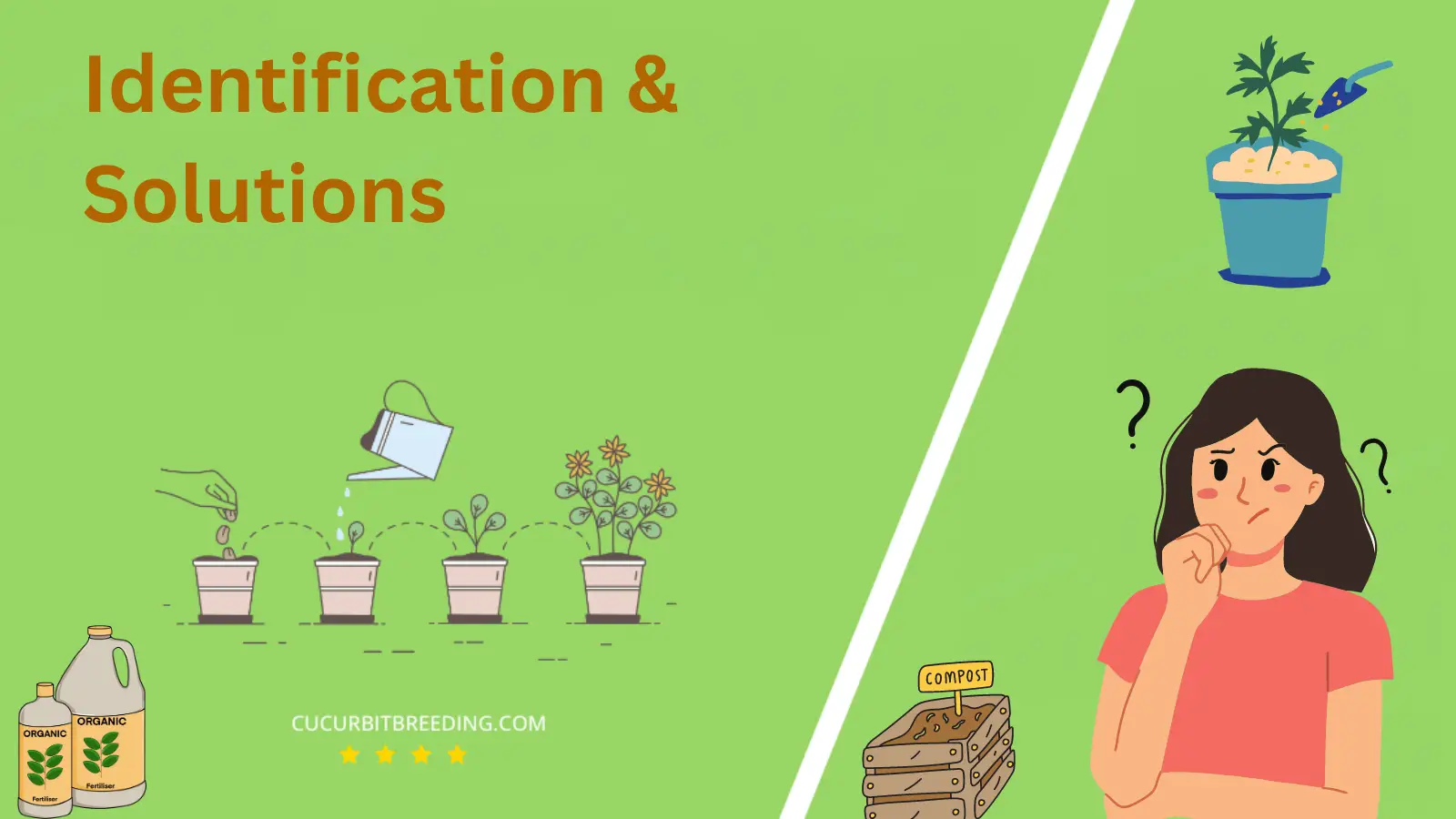
It’s a perplexing predicament that can turn any green thumb gardener’s mood sour: Passionfruit leaves turning yellow. Yes, that vibrant, glossy green being tarnished bit by bit with unsettling hues of yellow. Something is clearly not right with your beloved passionfruit plant. But what could it be?
Is it the sunlight, water, pests, or a mysterious disease to blame?
Intriguing, isn’t it? So, let’s embark on a horticultural detective quest to unearth the answers to this gardening enigma.
Why Are Passionfruit Leaves Turning Yellow?
1. Nutrient deficiency
| Description | : Lack of essential nutrients leads to yellowing of passionfruit leaves. |
|---|---|
| Solution | Increase nutrient intake through fertilization or soil amendment to prevent yellowing of passionfruit leaves. |
Passionfruit plants require a balance of key nutrients to sustain healthy growth. When these are missing, the leaves may turn yellow. This condition is known as chlorosis. This often occurs because of a deficiency in necessary nutrients such as nitrogen, iron, zinc, and manganese.
Lack of nitrogen is a common cause of yellowing passionfruit leaves. Plants need nitrogen for vital functions like photosynthesis and to maintain their lush green color. Without enough nitrogen, leaves can turn yellow as the plant can’t produce enough chlorophyll.
To combat this, you can use a slow-release, balanced fertilizer rich in nitrogen, applying it to the soil around the base of the plant. Avoid overly high doses, but ensure the plant is getting enough to maintain health.
Tags: Nutrient Deficiency, Nitrogen, Chlorosis, Balanced Fertilizer, Passionfruit
Iron, zinc, and manganese deficiencies also can cause yellowing. This involves an inability of the plant to produce chlorophyll even if there is sufficient nitrogen, resulting in yellowing specifically between leaf veins, a condition known as interveinal chlorosis.
Treatment for these deficiencies involves the application of a foliar spray that contains the missing nutrients. Make sure to follow the instructions on the label, including recommended frequency and amount.
Tags: Interveinal Chlorosis, Iron Deficiency, Zinc Deficiency, Manganese Deficiency, Foliar Spray
To prevent these problems in the future, consider a routine soil test to determine what nutrients your soil is lacking. This way you can amend your soil appropriately to provide the ideal nutrient balance for your passionfruit plants.
Tags: Soil Test, Nutrient Balance, Soil Amendment, Preventative Measures, Passionfruit
2. Overwatering
| Description | causes the roots to suffocate, inhibiting nutrient absorption and chlorophyll production, resulting in yellowing leaves. |
|---|---|
| Solution | Reduce watering frequency to prevent waterlogged soil and improve oxygen availability for root respiration. |
Passionfruit leaves turning yellow is often a sign of overwatering. Overwatering can cause waterlogged soil and poor aeration, leading to root rot. Root rot can interfere with a plant’s ability to absorb essential nutrients, causing the foliage to turn yellow.
Solution:
To solve this overwatering problem, make sure the passionfruit plant is in well-drained soil to prevent waterlogging. A good watering technique is to water deeply and then let the top inch of the soil dry out before the next watering. For potted plants, check if the pot has sufficient drainage holes. If it doesn’t, consider repotting the plant into a pot that does. Regularly check the plant’s moisture levels to prevent overwatering. Additionally, consider using a watering schedule and adjust it based on the seasons and the plant’s growing stages. Dealing with existing root rot may require a more serious intervention like pruning the affected roots and treating with a fungicide. It’s also essential to remember that overwatering could also leach away vital nutrients. If overwatering has been an ongoing issue, the plant might need a feed with a nutrient-rich fertilizer.
Remember, preventive care is the best tool for dealing with plant health issues. Understanding the plant’s watering needs and providing the right care can help prevent problems like yellowing leaves from occurring in the first place.
3. Underwatering
| Description | Insufficient water supply disrupts the plant’s ability to transport nutrients, resulting in yellowing of leaves. |
|---|---|
| Solution | Increase watering to provide adequate moisture for the passionfruit plant’s physiological needs. |
Underwatering can cause passionfruit leaves to turn yellow. When a passionfruit plant doesn’t receive adequate water, it is unable to effectively transport nutrients through its system, resulting in nutrient deficiencies that can express themselves as yellowing leaves.
Addressing underwatering issues to fix yellowing passionfruit leaves requires modifying your watering routine. Be sure to thoroughly water your passionfruit plant whenever the top inch or so of soil becomes dry to the touch.
Remember, it’s always better to water deeply and less frequently, as this encourages the growth of robust root systems that can better tolerate periods of drought. Alternatively, consider utilizing a moisture meter to take the guesswork out of watering.
With consistent watering practices, your passionfruit plant’s leaves should return to their healthy green state in time. Overall, attention to detail and understanding your plant’s specific needs are key in maintaining its health and vitality.
4. Pest infestation
| Description | Insufficient water supply disrupts the plant’s ability to transport nutrients, resulting in yellowing of leaves. |
|---|---|
| Solution | Increase watering to provide adequate moisture for the passionfruit plant’s physiological needs. |
When a passionfruit plant is impacted by pest infestation, these harmful organisms eat away at the plant’s foliage, damaging its ability to photosynthesize effectively. An essential part of the plant’s nutrition process is hindered, resulting in the leaves turning yellow. This yellowing, or chlorosis, is a visible sign of the plant’s declining health.
First and foremost, it is absolutely critical to identify the specific type of pest causing the problem. Once the culprit has been identified, the appropriate pest control methods can be applied. Some pests can be eradicated with insecticidal soaps or oils, whilst others may require different treatment methods.
Providing proper maintenance is also key to preventing future pest infestations. Regular watering, feeding, and pruning practices contribute to the plant’s overall health and resilience. A healthier plant is less susceptible to pests and can recover quicker when affected.
Finally, consider companion planting. Certain plants, when grown near passion fruit, can deter pests naturally. Enhancing your garden’s biodiversity in this way is a sustainable and organic pest control strategy.

5. Disease or fungal infection
| Description | Increase watering to provide adequate moisture for the passionfruit plant’s physiological needs. |
|---|---|
| Solution | Apply appropriate fungicide to treat and prevent disease or fungal infection causing yellowing of passionfruit leaves. |
Fungal diseases or infections are one of the major causes of yellowing in passionfruit leaves. These diseases, often caused by overwatering, poor drainage or high humidity, attack the plant and disrupt its normal metabolic processes. As the disease progresses, the leaves often turn yellow as a sign of stress and poor nutrient uptake.
The remedy for this problem involves applying a generous amount of organic matter to improve soil fertility and drainage and decreasing irrigation to avoid waterlogged soil. Also, consider using a fungicide that’s safe for fruit-bearing plants. It’s also important to prune any visibly diseased leaves to prevent the spread of the fungus. Maintaining good air circulation around the plants can also help reduce humidity levels, deter fungal growth, and ultimately prevent the leaves’ yellowing issue.
6. Exposure to extreme temperatures
| Description | causes physiological stress, disrupting chlorophyll production and leading to yellowing of the leaves. |
|---|---|
| Solution | Provide shade or move to a more suitable location to prevent exposure to extreme temperatures. |
Extreme temperatures can greatly affect the health of a passionfruit vine, often causing the leaves to turn yellow. High temperatures can cause water to evaporate from the leaves faster than the roots can supply, leading to dehydration. Similarly, cold temperatures can slow down the plant’s metabolic processes, leading to yellowing leaves due to nutrient deficiencies.
To resolve this, it is important to manage the plant’s exposure to such extreme conditions. In hot weather, you should ensure a steady supply of water to the plant. Setting up a watering schedule and maintaining it consistently would help fulfil its hydration needs. Mulching around the base of the plant would also help to retain moisture within the soil, preventing quick evaporation.
In cold weather, it might be necessary to move the plant (if potted) to a warmer location or provide some form of protection against cold winds and frost. Using plant covers or frost protection fabrics can effectively moderate temperature extremes. Regular feeding of balanced fertilizer can also help combat nutrient deficiencies caused by slowed metabolic processes during colder weather.
7. Aging or natural leaf senescence
| Description | causes a decrease in chlorophyll production, leading to yellowing of the leaf. |
|---|---|
| Solution | Regularly remove yellowing or dead leaves to promote plant health and encourage new growth. |
The yellowing of passionfruit leaves can often be attributed to nutrient deficiency. This primarily involves a shortage of essential nutrients like nitrogen, iron, and magnesium – elements vital for the plant’s photosynthesis process, tissue development, and overall growth. When these are deficient, leaves may begin to yellow because the plant is unable to produce enough chlorophyll, the pigment that gives leaves their green color.
Addressing nutrient deficiency involves the right balance and provision of essential nutrients. Regular soil testing can help identify what nutrients are lacking. Application of balanced fertilizers that include necessary micronutrients can help resolve the issue. If your soil testing finds that your soil pH is too high or too low, which can affect nutrient availability, you may need to amend your soil. A proper watering routine will also ensure the nutrients are well absorbed by the plant.+
If the yellowing of leaves is accompanied by other symptoms such as leaf drop or stunted growth, it’s important to also consider potential pests, disease and environmental stressors. An integrated approach involving balanced nutrition, regular monitoring, and appropriate pest and disease management will return your passionfruit plant to its lush, green, and healthy state.